Wout van Aert will race the 2023 Milan–San Remo with a 1x SRAM Red eTap AXS groupset.
While the opening Monument of the season is played out over nearly 300km, Milan–San Remo is generally a very fast race, with the sharp end of the peloton averaging 45.4km/h in the 2022 edition.
Why is van Aert using a 1x drivetrain? Well, let's take a look at the 2020 Milan–San Remo winner's setup – and some of the potential advantages that might have led to the decision.
What’s van Aert running?
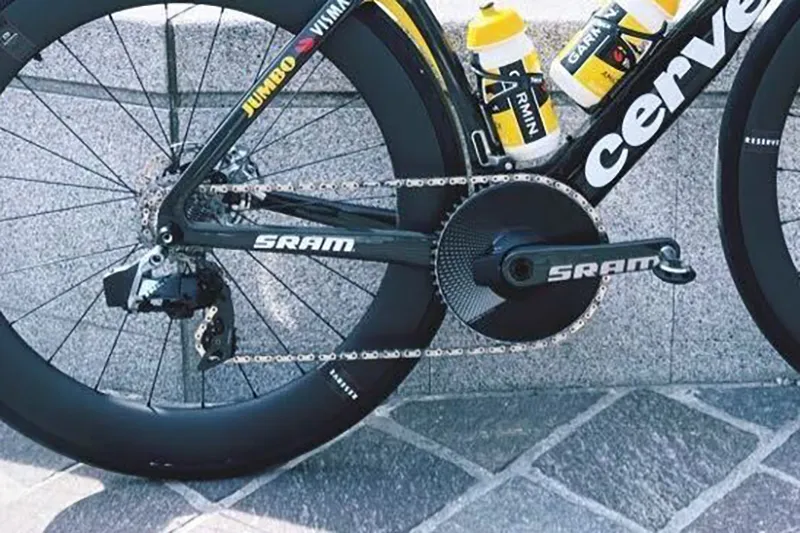
In pictures posted to his Instagram account, Van Aert reveals he will race on a Cervélo S5, but will forgo his typical 2x setup in favour of a 1x SRAM Red eTap AXS electronic groupset.
Speaking to BikeRadar, a SRAM spokesperson confirmed van Aert would run a 52-tooth chainring paired with a 10-28t cassette.
He also appears to be using a chain guide.
Why Milan–San Remo?
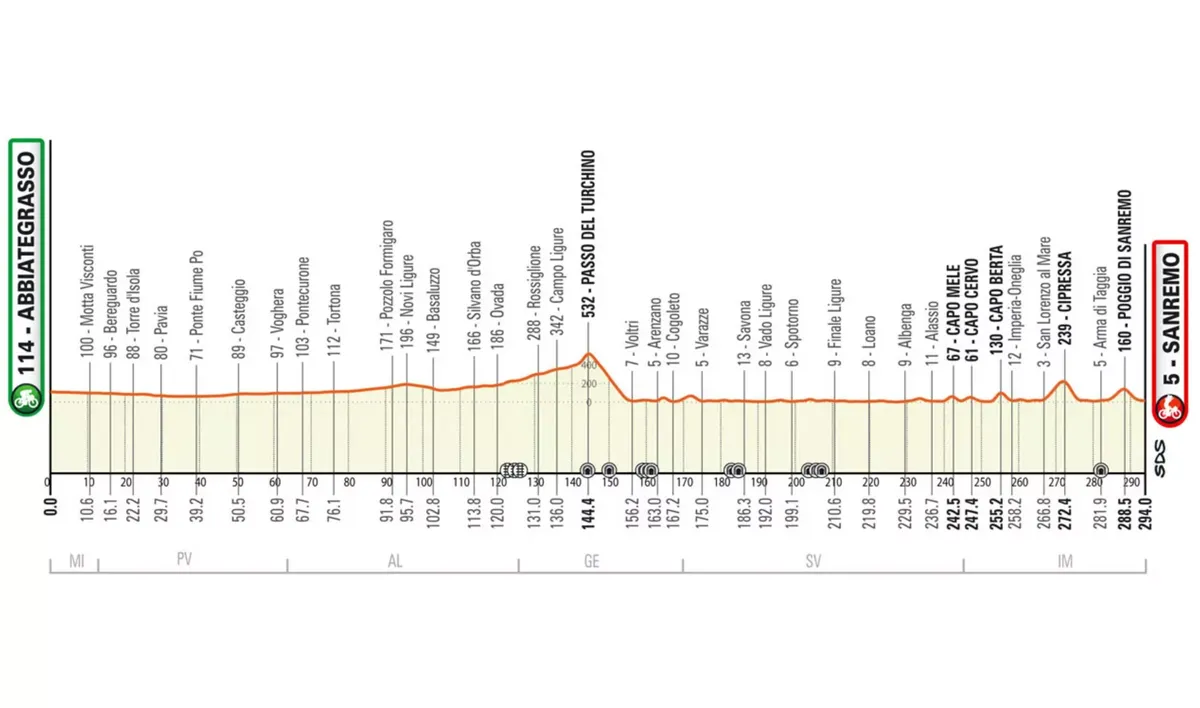
That’s a big gear, but Milan–San Remo is a notably fast race with no steep climbs of note, and, as a result, van Aert is unlikely to miss the wider choice of gears presented by a 2x setup.
It's a route suited, on paper at least, to a 1x drivetrain, particularly given the fact that the latest road rear derailleurs can accommodate a wide-ranging cassette.
La Primavera is sometimes described as an opera, with a slow build of tension before exploding into life on the climb of the Poggio on the outskirts of San Remo in the northwest corner of Italy.
The opening 100km of the 294km race passes without note, and even then the long, gradual climb of the Passo del Turchino (532m) poses no challenge to the peloton.
Another 100km of largely flat roads follow before the three small climbs of the Capo Mele, Cervo and Berta in quick succession, as the race enters the final 50km.
The Cipressa (5.6km at 4.1 per cent) comes with 22km remaining before the often decisive ascent of the Poggio (3.7km at 3.7 per cent). It's a big-ring climb, ridden at breakneck speed, and van Aert will have no need for a small chainring.
It's here that a small, select group of riders is likely to form ahead of the technical, rollercoaster descent and flat 2km run-in to the finish.
What are the potential advantages of a 1x setup at Milan–San Remo?
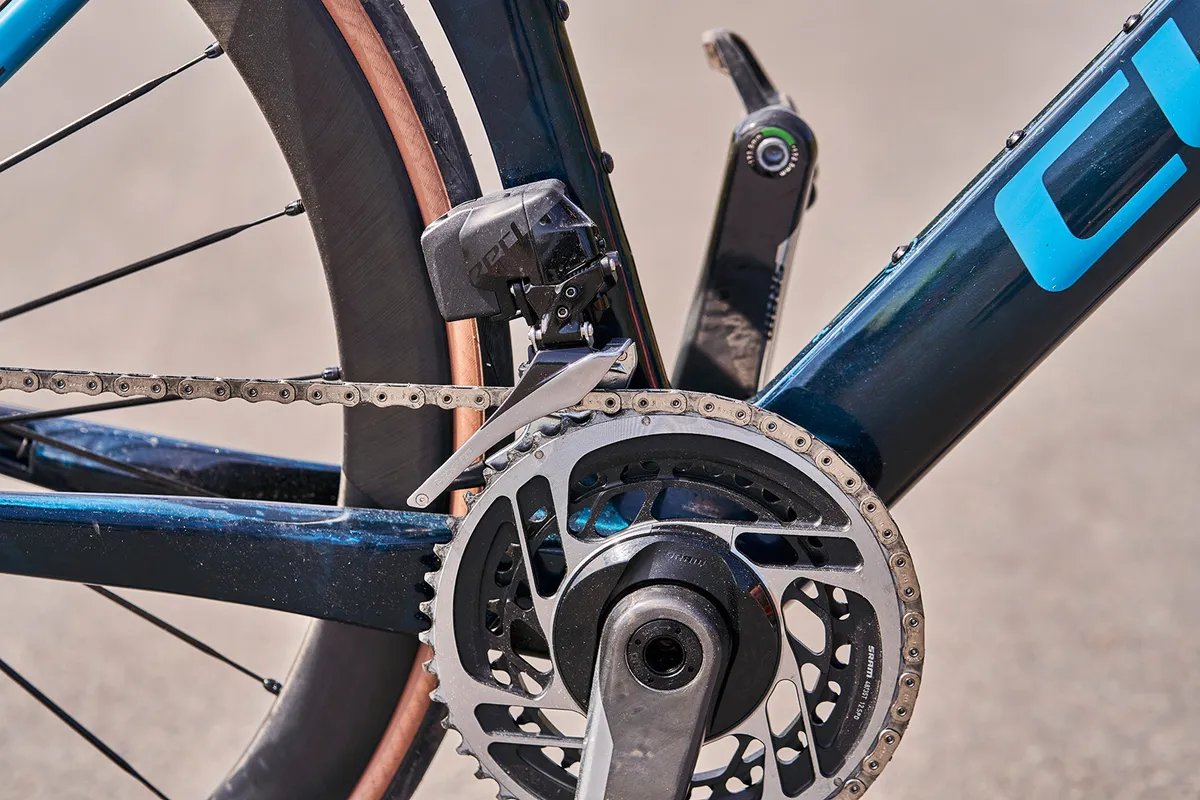
We've already covered the fact that a 1x setup is likely to provide all the gearing range a rider like van Aert will need. It's not a setup that will suit every rider but the Belgian has no doubt done his homework.
In theory, a 1x setup could also be slightly more aerodynamic.
SRAM eTap AXS front derailleurs are relatively big and, given the high speeds of the race, there's a small saving to be made here.
Running a chain guide diminishes those potential aero advantages slightly, but that comes with advantages of its own.
On that note, chain security may be part of van Aert's thinking, too.
Speaking to BikeRadar, Michael Valgren (EF Education–EasyPost) said that, although he crested the Poggio (the race’s critical final climb) in the front group of select riders in last year’s race, a dropped chain at the top of the descent spelt the end of his day.
Ultimately, there is no chance of a mistimed front shift with 1x and the ability to run a chain guide boosts chain security.
Finally, there's a small weight saving from losing the front derailleur.
Update – Belgian website HLN has reported van Aert as saying: “I won't need an inner chainring. Moreover, this is faster and more aerodynamic. Lighter, too. Since this year we have had that option thanks to SRAM. A small profit that we want to take." (Editor's note: We are relying on Google Translate for the translation here).
Van Aert refers to Jumbo–Visma's switch from Shimano to SRAM as the team's groupset sponsor in January – one of the major sponsor changes on this season's WorldTour bikes.
SRAM has been the major force behind 1x, introducing the first 1x groupset for mountain bikes in the form of XX1 in 2012.
In the decade since, SRAM has led the wholesale adoption of 1x in mountain biking, while also developing single-ring options for road cycling, cyclocross and gravel.
1x groupsets in road racing – a short history
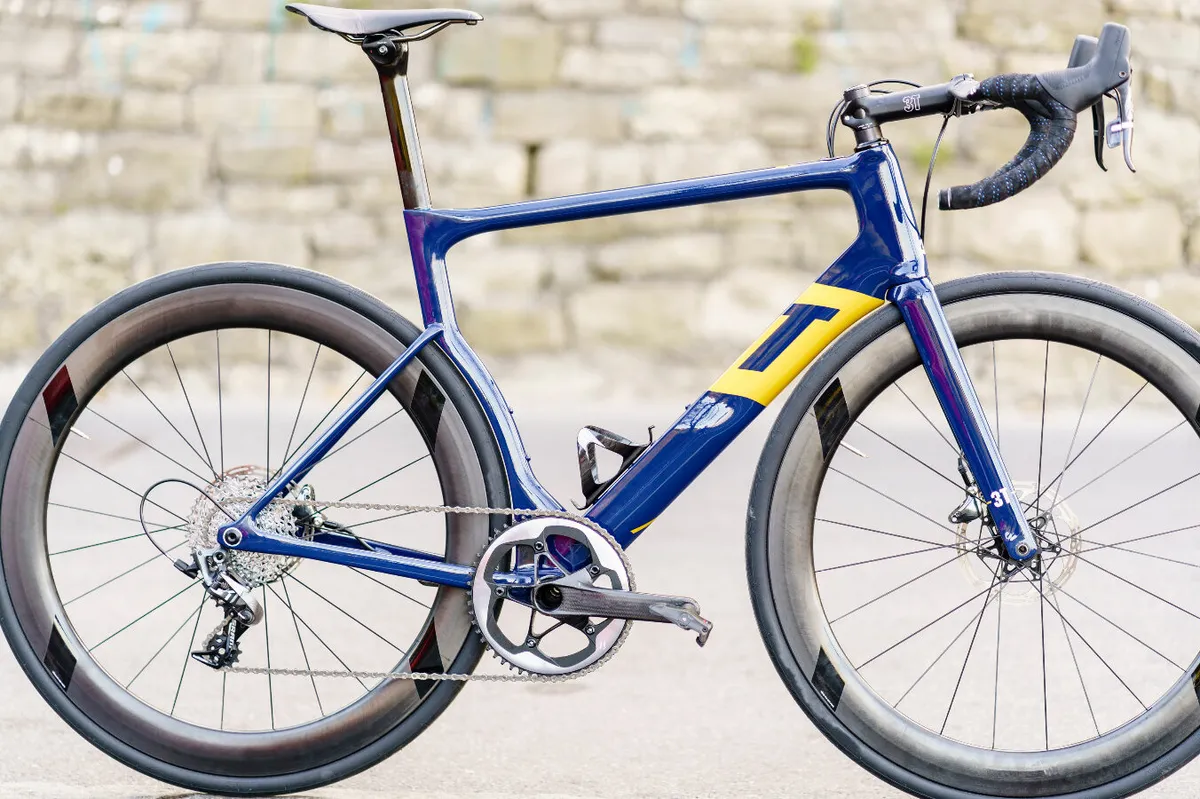
Outside of time trials, 1x drivetrains have had a chequered history on the road.
Former Aqua Blue Sport rider turned pundit Adam Blythe pinned the team's downfall to its early adoption of 1x drivetrains.
Sub-optimal gearing options that significantly disrupted cadence when shifting and limited range were the two most common complaints from riders on the team.
However, 1x drivetrains on road bikes have gone through a very small-scale renaissance in recent years, primarily in races run on flatter parcours.
On that note, it's worth noting that this isn't the first time we've seen a 1x setup at the Classics.
Lizzie Deignan’s win at the inaugural Paris-Roubaix Femmes in 2022 is the biggest win in recent memory.
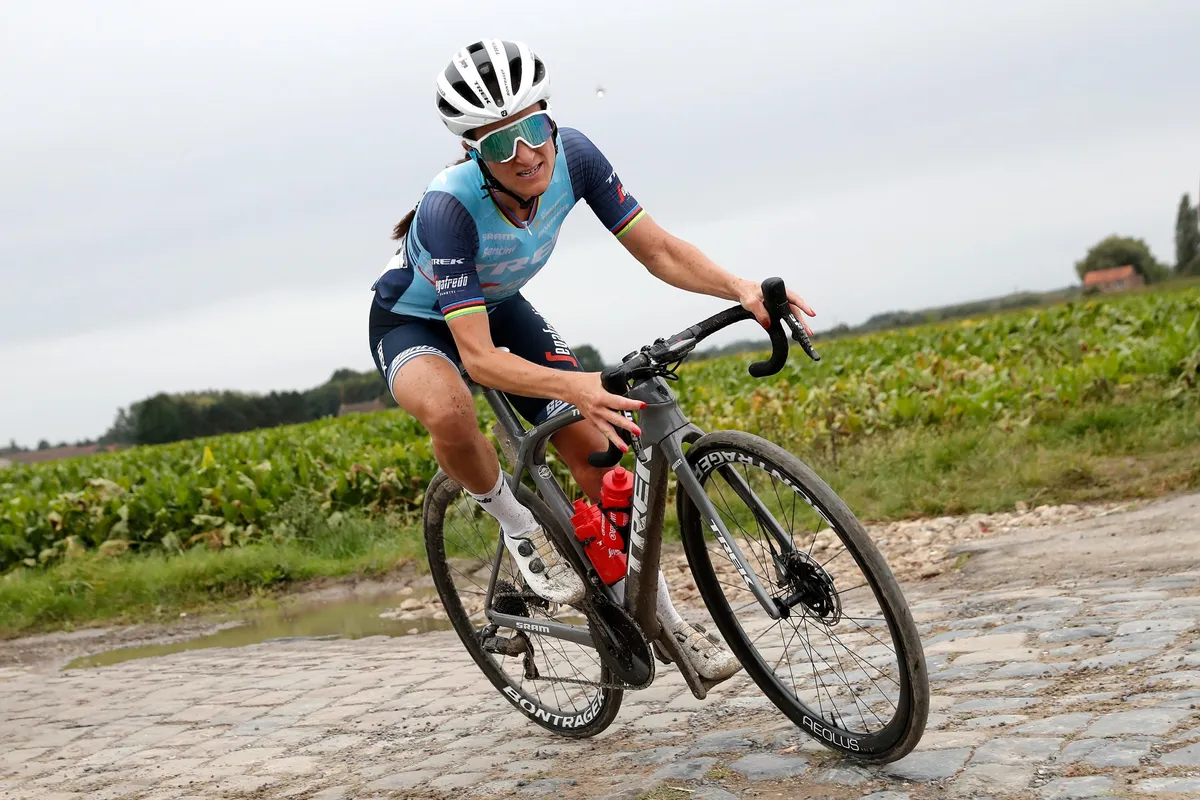
Though not strictly a 1x setup, Victor Campenaerts has been experimenting with single-ring drivetrains paired with a Classified two-speed hub.
And, as we've already alluded to, an increasing number of riders have been running 1x drivetrains in time trials.
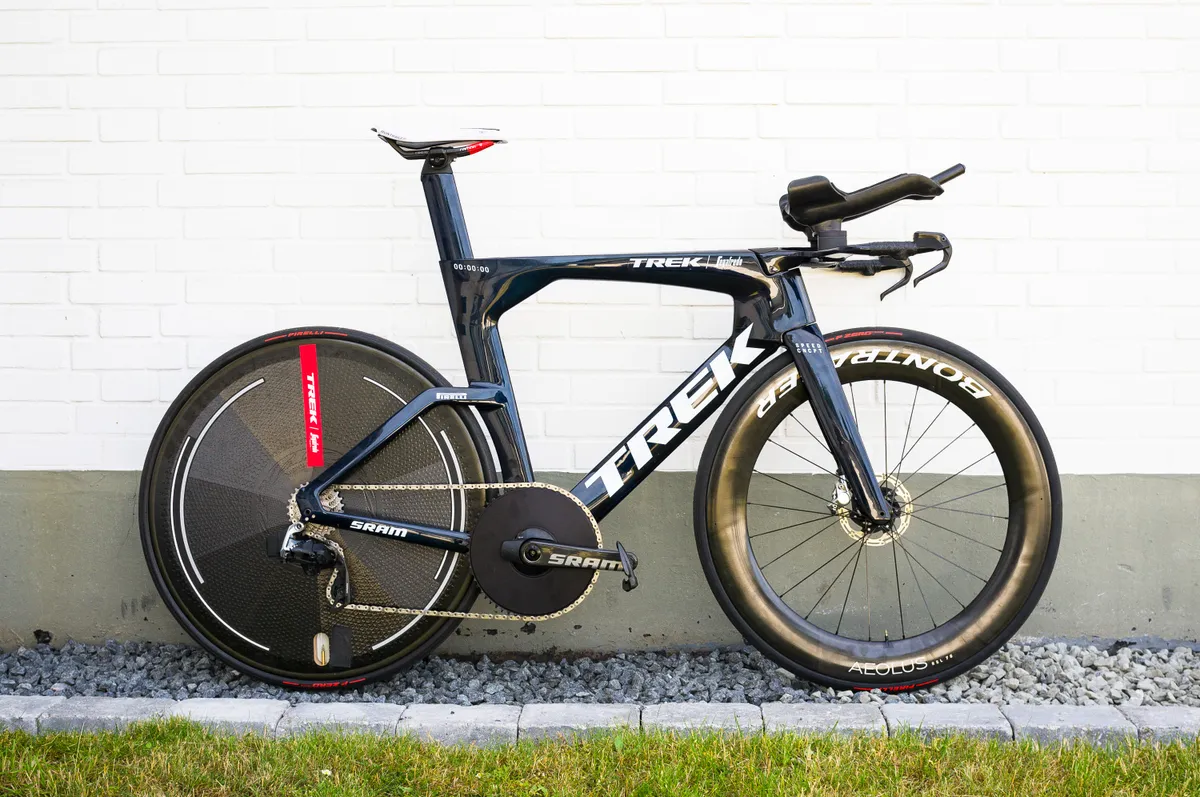
On flat courses, there's no need for the wide range or small steps between gears offered by a 2x crankset, and a 1x drivetrain with a big chainring can help riders optimise chainline and, in turn, drivetrain efficiency.
Time trials aside, could a decisive win at Milan–San Remo further interest in 1x drivetrains on the road?
